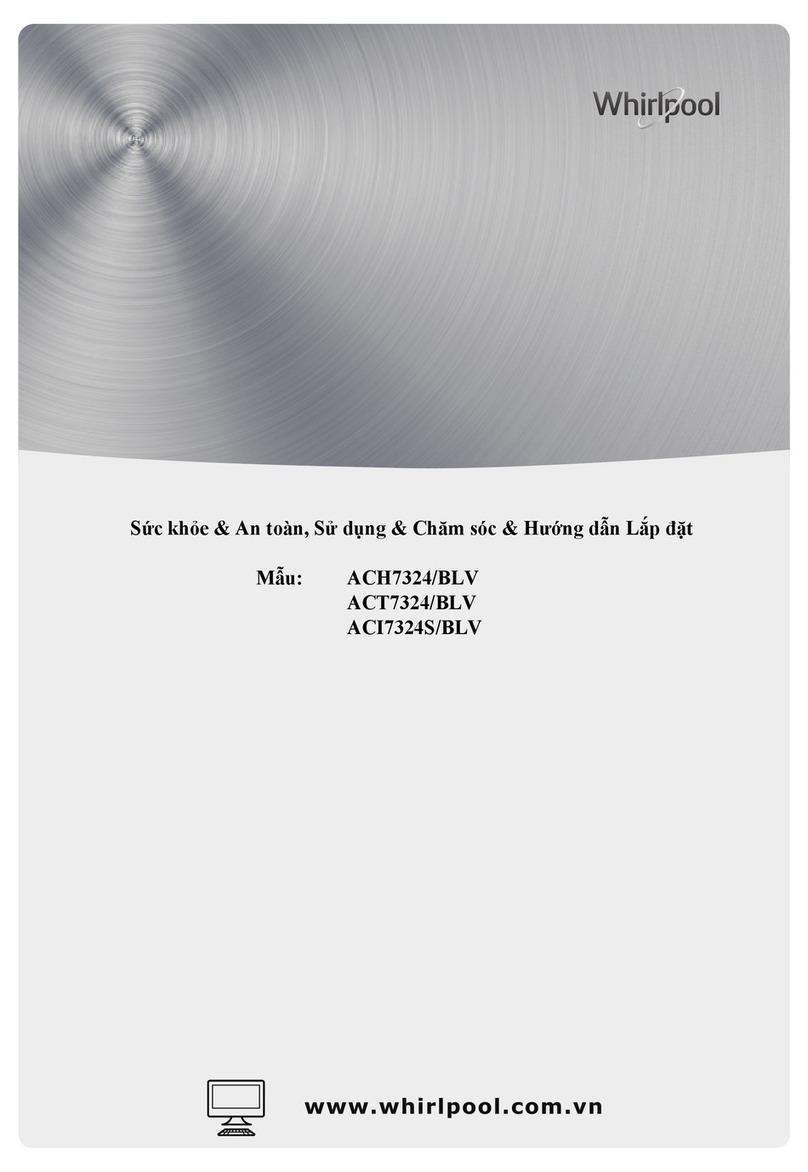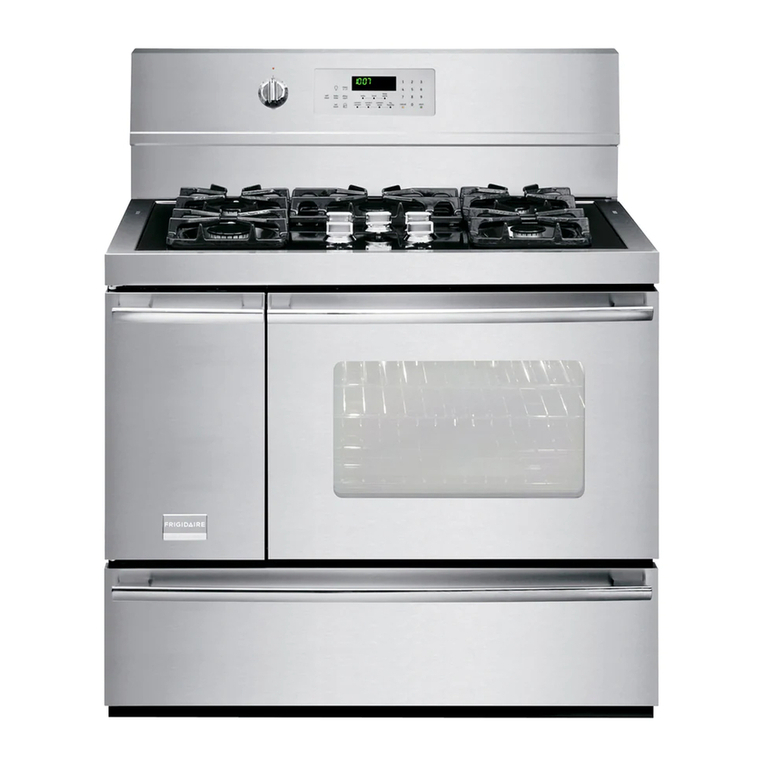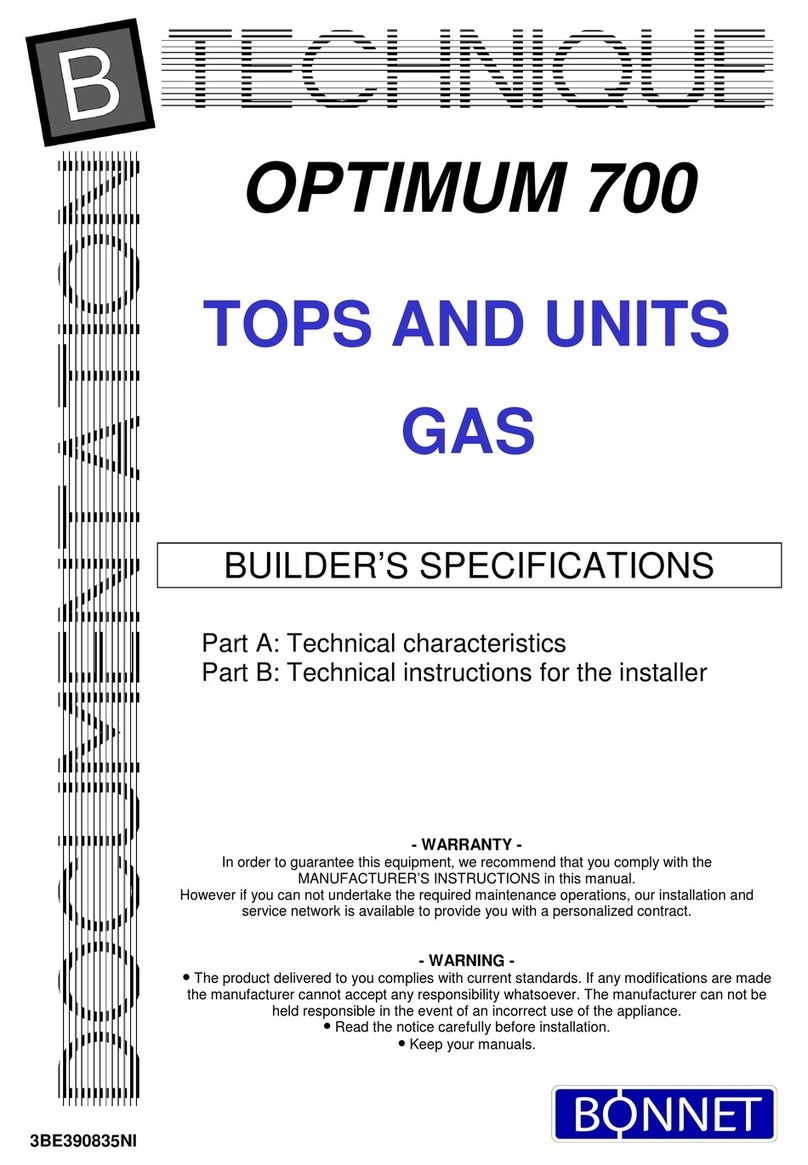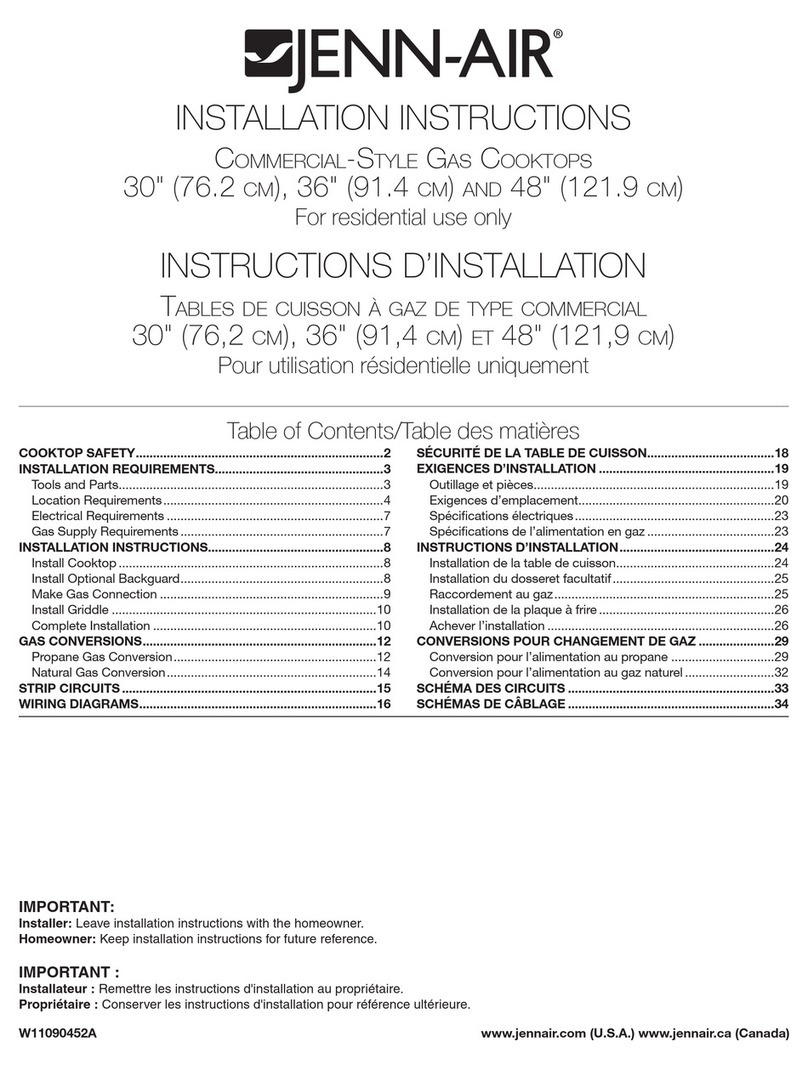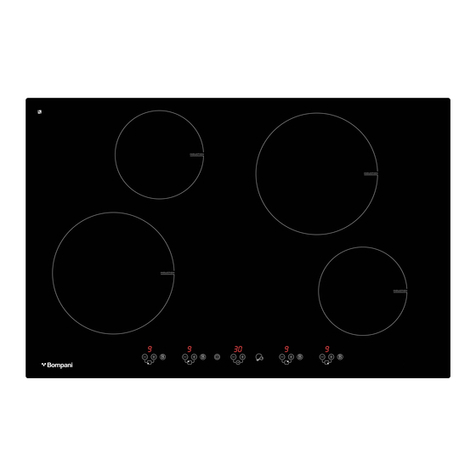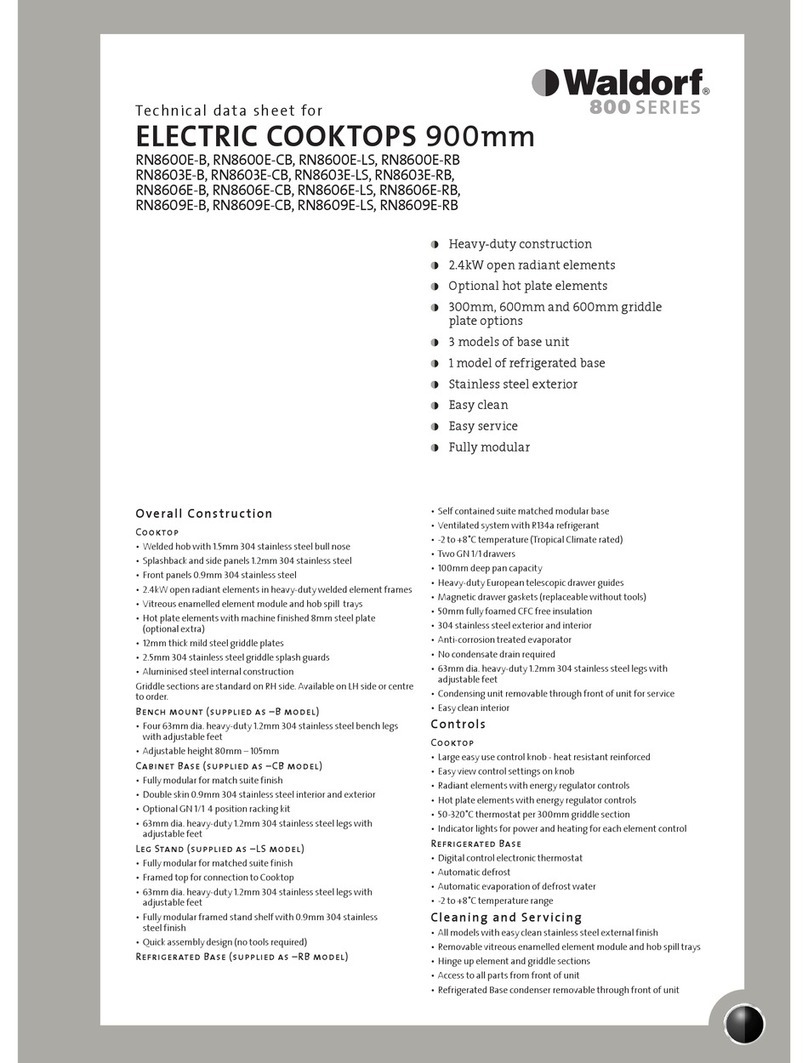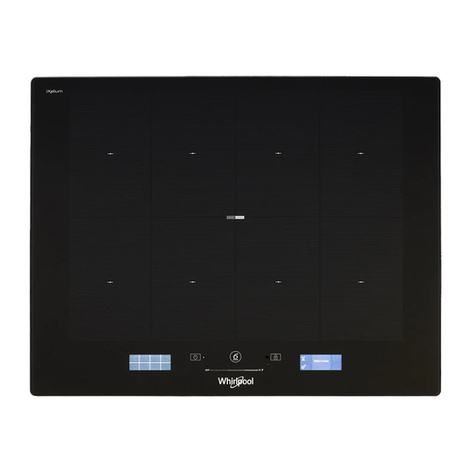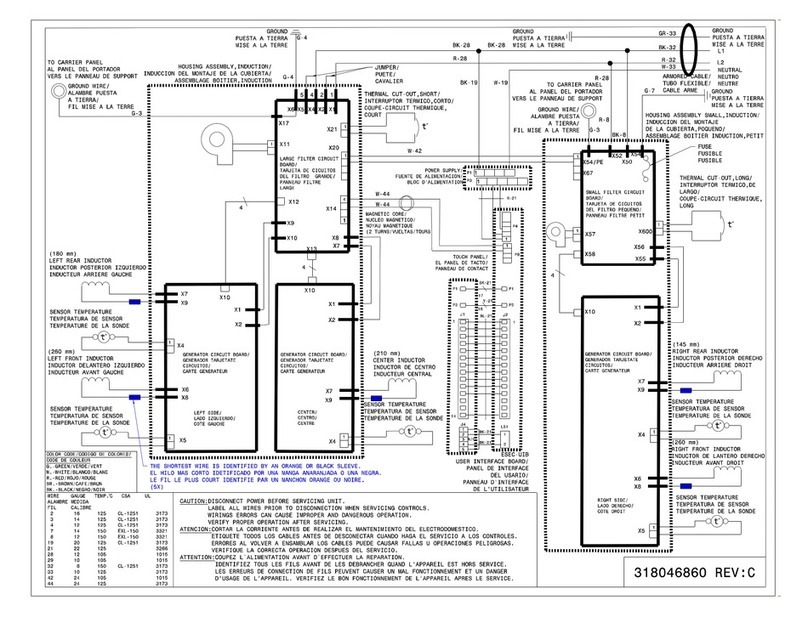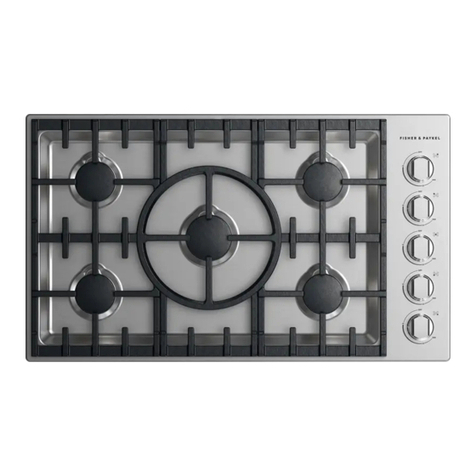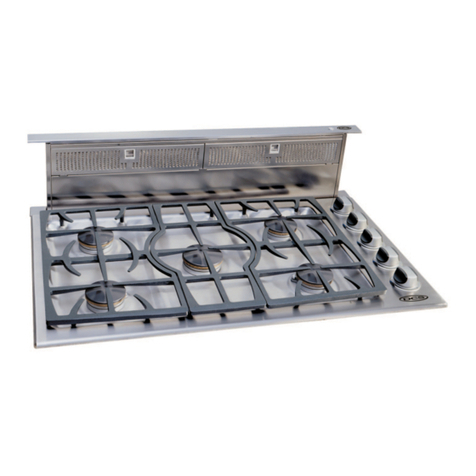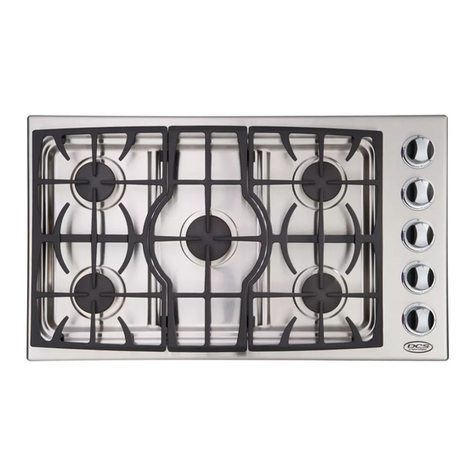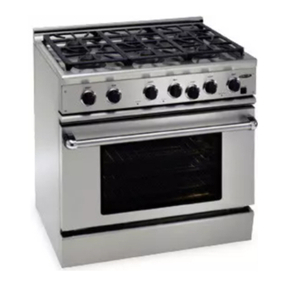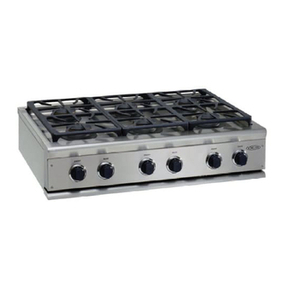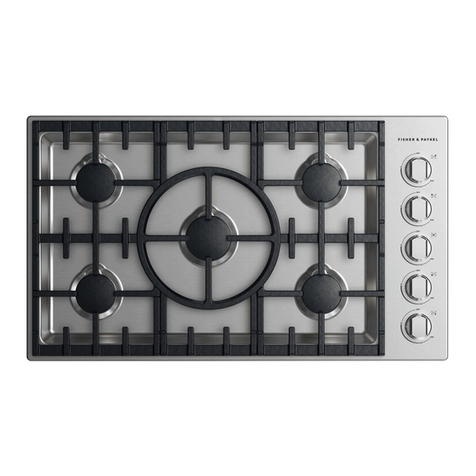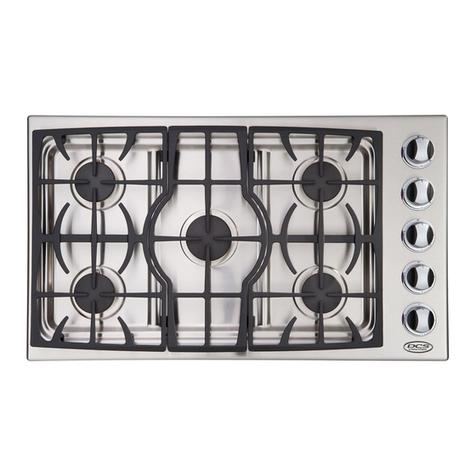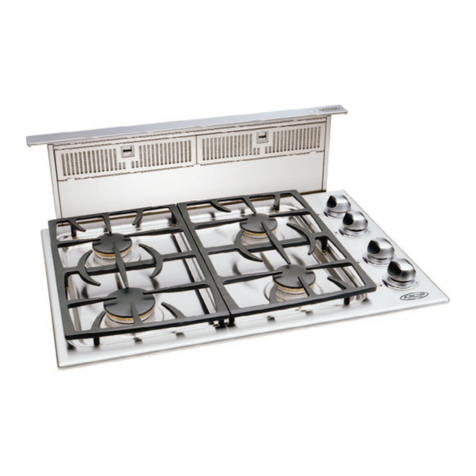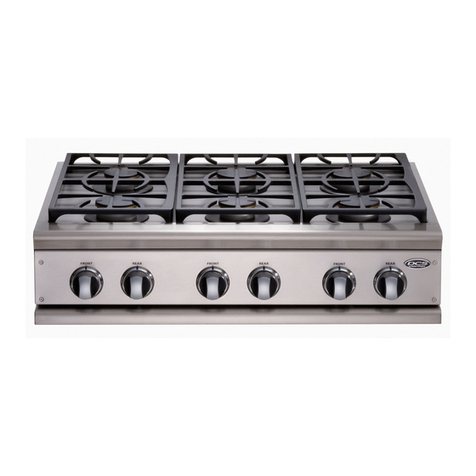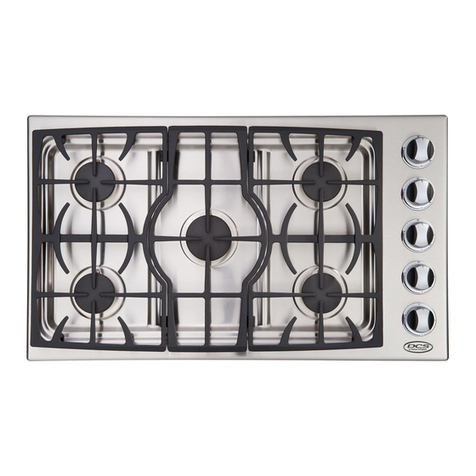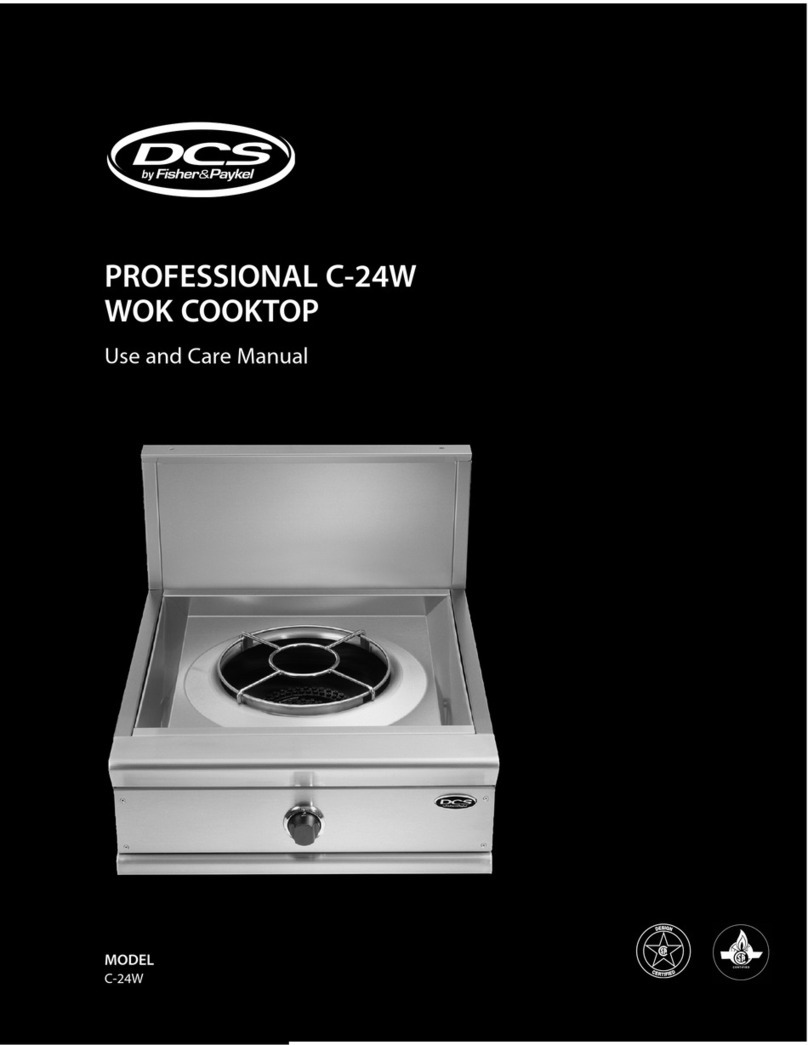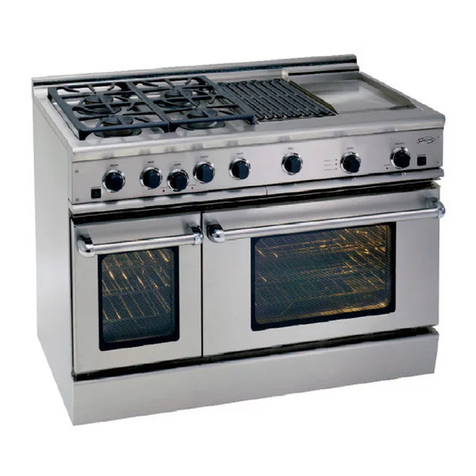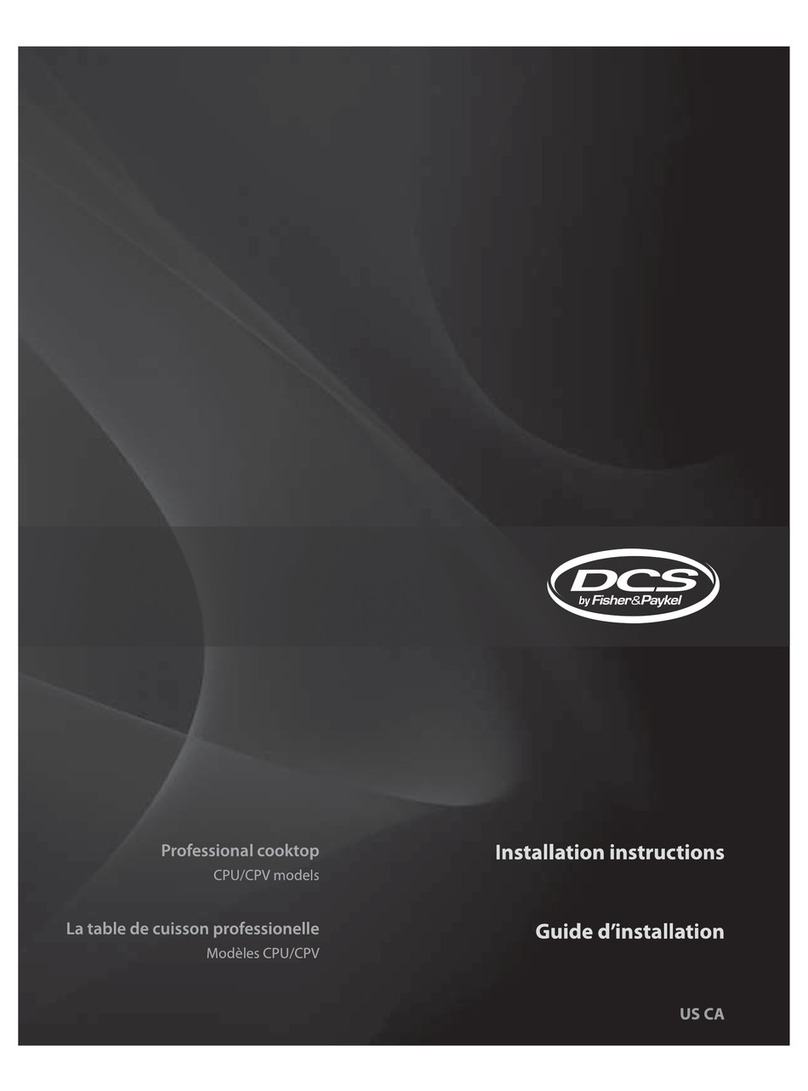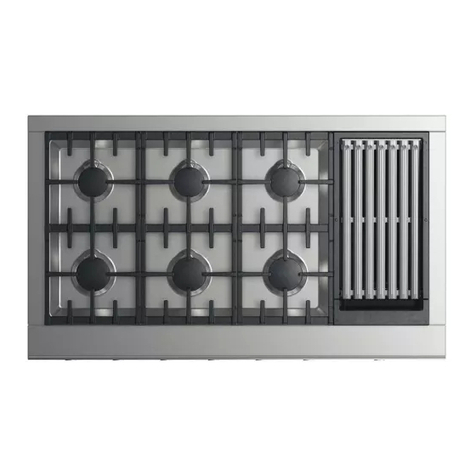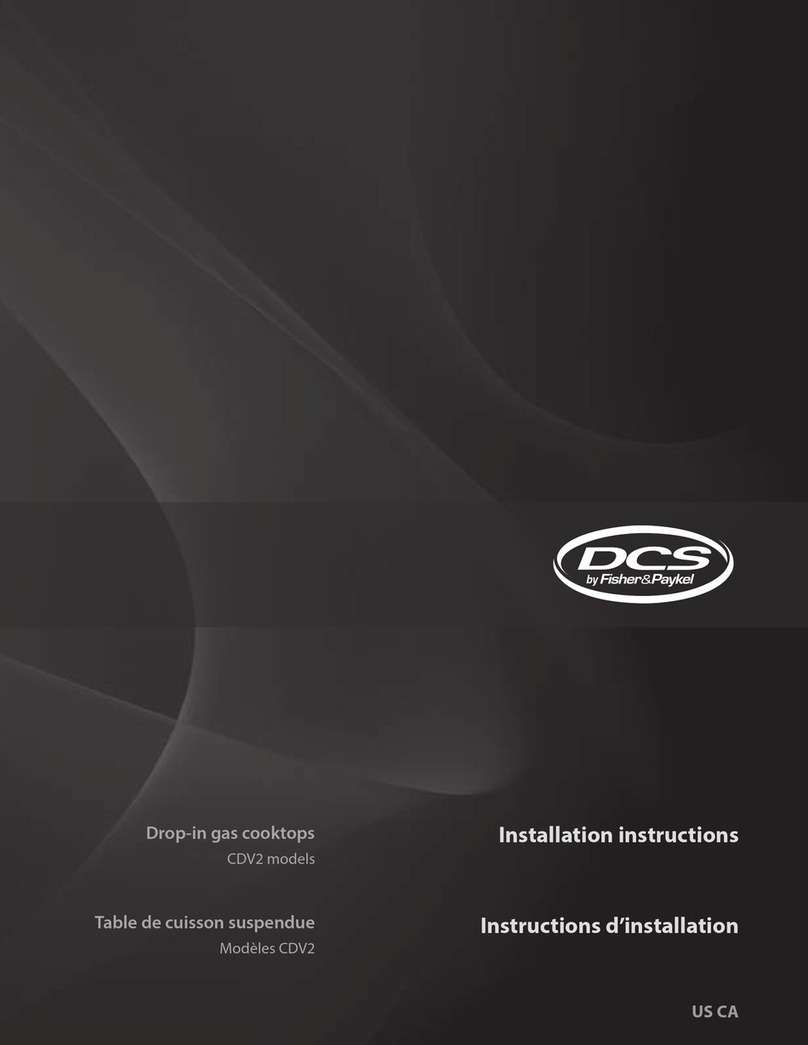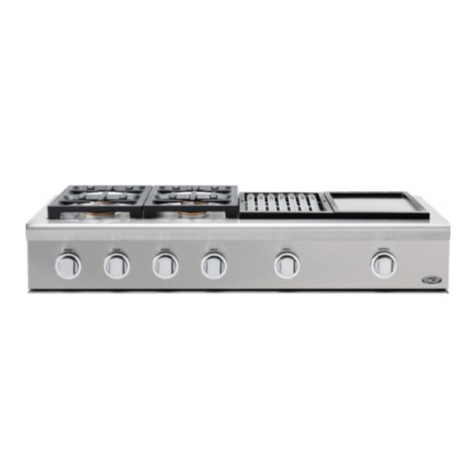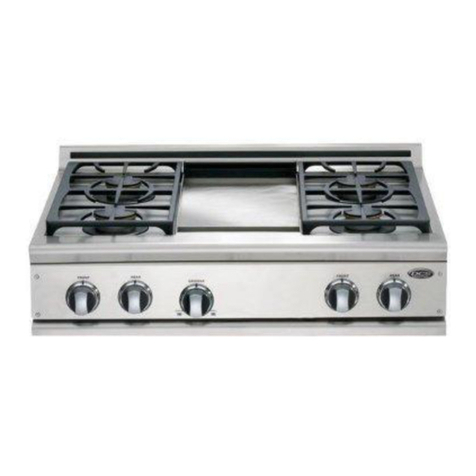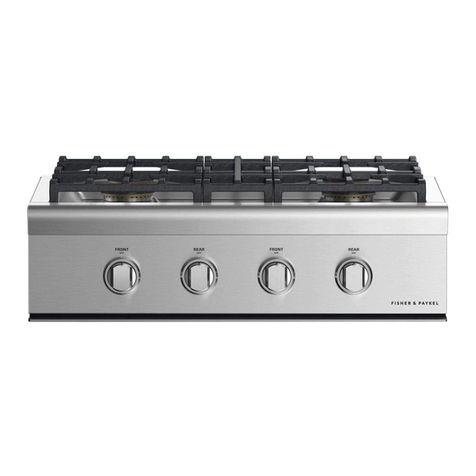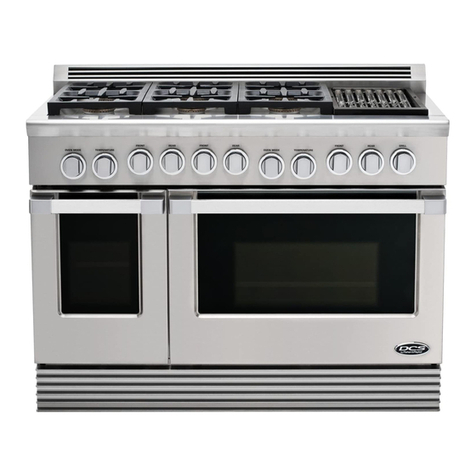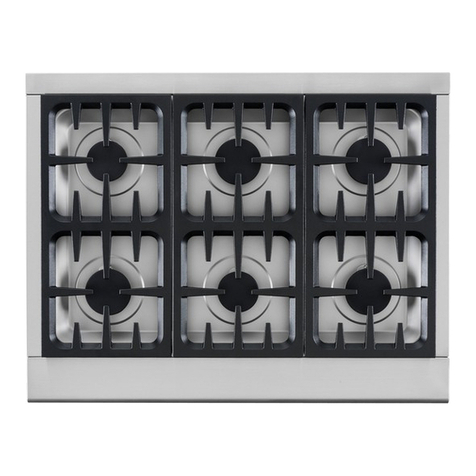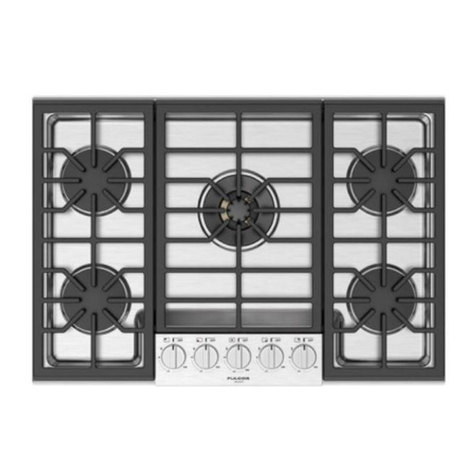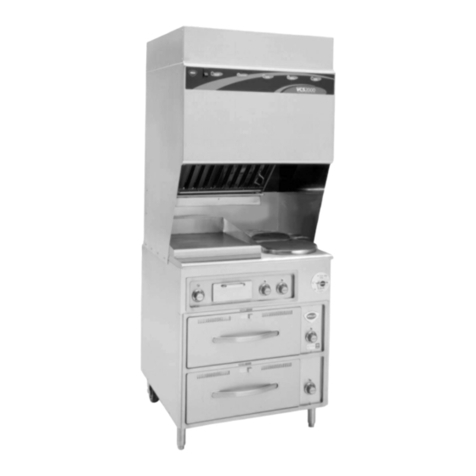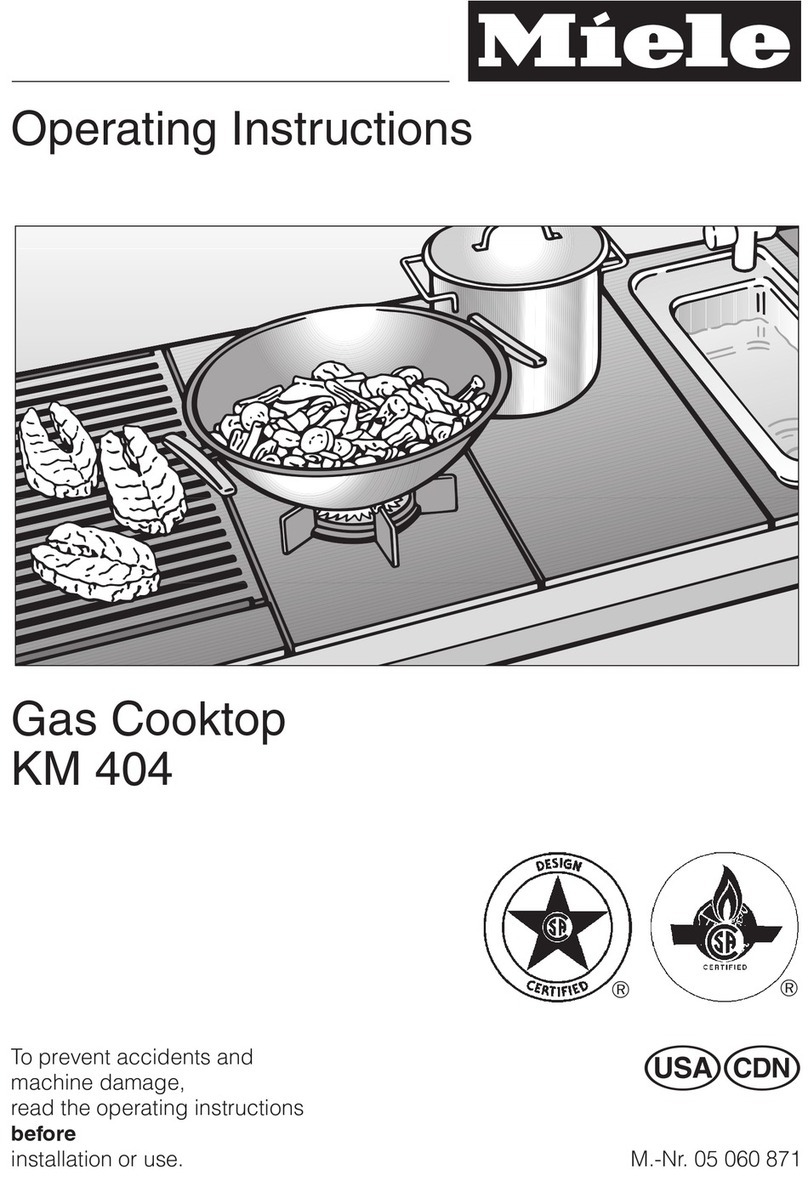HEADER
The backguard must be installed when there is less
than a 12”clearance between combustibles and
back edge of cooktop. For island installations and
other installations with over 12”clearance, and
optional stainless steel trim channel is available to
cover the backguard mounting flanges.
Refer to Fig.12
A. Slide backguard over the 2 flanges on the rear
of the appliance. Fasten the back with two screws
(See A Fig.12) provided. No screws are required
behind the wok section.
B. Fasten the top of the backguard to the wall
with two screws through the backguard (See B.).
C. Place the backguard cap on top and fasten
using the two counter-sunk screws provided.
Check for proper burner flame characteristics and
adjust the air shutter if necessary. Each burner and
valve is individually checked at the factory prior to
shipment but variations in local gas supply may
make adjustment necessary.
Burner flames should be blue and stable with no
yellow tips, excessive noise or lifting. If any of
these conditions exist, check that the regulator is
installed with the arrow pointing towards the appli-
ance, and that it is 5.0 inches w.c. Nat. gas; and 10.0
inches for propane.
If this condition persists, the air shutters should be
adjusted. Begin by removing the valve panel using
the access hole provided, loosen the air shutter
locking screw on the face of the burners mixing
head.
If the flame is too yellow, indicating insufficient air,
adjust the shutter to increase the air inlet.
If the flame is noisy or tends to lift away from the
burner, indicating too much air, adjust the shutter to
decrease the inlet.
The burner flame should be 1-1/2 to 2-1/2 inches
high.
Adjustable - Low Setting:
The open top burner valve used on your cooktop
has an adjustable low setting. Each valve is individ-
ually tested and adjusted on the appliance prior to
shipment. Due to fluctuations in gas pressure and
heating valve, you may feel it necessary to increase
or decrease the gas flow at the low position.
STEP 7: TEST & ADJUSTMENTSTEP 6: BACKGUARD INSTALLATION
8
BACKGUARD INSTALLATION - TEST & ADJUSTMENT
FIG. 12
FIG. 13


